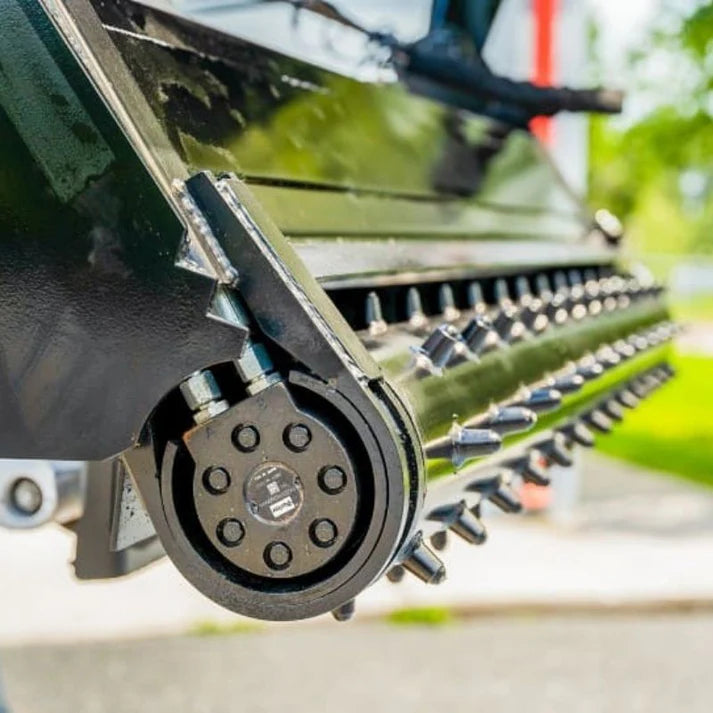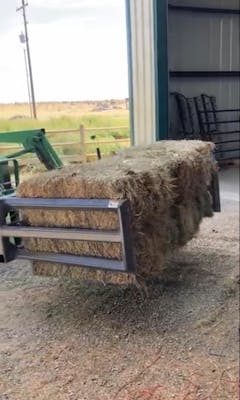-
Stump Grinder Extreme Duty | Blue Diamond
From $15,919.00 USDRegular price From $15,919.00 USDSale price From $15,919.00 USD Regular priceUnit price / per$15,474.00 USD -
Stump Grinder | Bradco
From $10,899.99 USDRegular price From $10,899.99 USDSale price From $10,899.99 USD Regular priceUnit price / per -
Stump Grinder with Swing Arm | Blue Diamond
From $28,148.00 USDRegular price From $28,148.00 USDSale price From $28,148.00 USD Regular priceUnit price / per$31,679.00 USD-11%Sale

Will My New Stump Grinder Fit My Skid Steer?
<div><h3><center>Universal Quick Attach</center></h3>
<br>
Your skid steer stump grinder attachment will come with a universal quick attach. The universal quick attach ensures almost all new equipment and attachments will fit modern skid steers.
<br>
<h3><center>Hydraulics</center></h3>
<br>
A standard flow skid steer is all that is needed for most stump grinder attachments. Some extreme duty models may require high flow.
<br>
<br>
If you have a high flow model you may require a case drain line. This is the “third” hydraulic line that is essential for many high flow hydraulic applications.
<br>
<br>
Each skid steer stump grinder will have an operational hydraulic flow range published by its manufacturer. Ensuring your skid steer is capable of providing the correct hydraulic flow is important to ensure the proper function of your stump grinder. </div>

Electrical Connection
Some stump grinders require electrical connections. This is common on swing arm style attachments.
<br>
<br>
If your stump grinder does require an electrical harness, the proper one should be selected to fit your machine at checkout. If you are unsure which one you need, you can always contact one of our team members.
<br>
<br>
Ideally, if you have an external electrical harness (“14 pin” connector or otherwise), the stump grinder will plug directly into it, and you will be able to use the built in controls in your skid steer to operate the stump grinders swing arm.

What Type of Motor Should My Skid Steer Stump Grinder Have?

We need to have a quick look at what the ideal qualities would be for a skid steer stump grinder motor.
<br>
<br>
Firstly, because we are trying to spin a flywheel that often weighs in excess of 1500lbs through larger stumps, we are going to need a lot of torque. Torque is going to be far more important than the speed of the flywheel. For example, having a fast flywheel that looses 50% of it’s energy when it contacts the stump won’t do us any good. A high torque, low speed motor is far more useful.
<br>
<br>
We also have to consider how smooth the motor is at controlling the flywheel at a wide range of hydraulic flow. This is specially important for low flow skid steers. Smooth control over the flywheel is far more difficult in low gallon per minute operations.
<br>
<br>
Another consideration is efficiency. Having a hydraulic motor that is only 70% efficient leaves 30% of your skid steers potential unused. This translates into slower grinding times and less work done each day.
<br>
<br>
<h3><center>Radial Piston Stump Grinder Attachment Motor</center></h3>
<br>
<br>
We suggest buying a skid steer stump grinder with a radial piston pump.
<br>
<br>
In fact, a radial piston motor checks all the boxes when compared to the often used “direct drive” geroler motor.
<br>
<br>
The radial piston motor has a higher displacement than many direct drive motors of similar output. The higher displacement allows the motor to produce high torque and maintain low speed (LSHT Motor), while the direct drive motors lower displacement means it has to spin at high speed with a lower torque.
<br>
<br>
The higher displacement also allows the radial piston motor to maintain smoother control in low flow applications. Radial piston motors also have efficiency as high as 97% while direct drive motors are known to be only 70% efficient.
<br>
<br>
So what’s the draw back to radial piston motors? For one, they are more expensive. This is largely because they are built with extremely tight valve clearances making the manufacturing process more expensive. Another draw back to the tighter valve clearances is that the motor will have a lower contamination tolerance than a direct drive motor. Most customers will accept this draw back with a commitment to proper maintenance and cleanliness.
Skid Steer Stump Grinder Flywheels

The size of your skid steer stump grinders flywheel, as well as the number of cutting teeth and their placement will largely determine how well your stump grinder cuts through stumps.
<br>
<br>
The size of the flywheel usually increases with the size of motor and host machine. Having a large flywheel for the size of motor will give your wheel more inertia when it’s cutting allowing it to rip through stumps easier without slowing down.
<br>
<br>
Flywheels range in diameter, thickness and weight. Normally, however, 24” to 31” diameter, 3/4” to 1 1/2” thickness and any where from 1,000 to 2,000 pound flywheels are used for skid steer stump grinders.
<br>
<br>
The teeth should be on both sides of the flywheel to allow for cutting in both directions. Some manufacturers will only put cutting teeth on the edge of the flywheel to save money, however, we do not recommend this set up.
Swing Arm or No Swing Arm?

Aside from saving time and offering great visibility, the main advantage to having a swing arm attachment is that it limits the amount of trampled turf around the the stump by not having to have the skid steer moving back and forth multiple times. This make it a handy option for arborists working primarily on customers lawns.
<br>
<br>
Another advantage to having a swing arm is ease of operation for the skid steer operator. Being able to sit stationary and control the swing arm alone allows for more precision and efficiency. It also allows for added safety when working in tight quarters.
<br>
<br>
But what are the disadvantages to having a swing arm? Firstly is the higher upfront cost to purchase the swing arm model. You should also consider that your swing arm stump grinder will have more hydraulic and electrical components.
<br>
<br>
Want to know what the best skid steer stump grinder is? Check out our article <a href="https://skidsteersdirect.com/blogs/news/best-skid-steer-stump-grinder" target="_blank" title="Best Skid Steer Stump Grinder" rel="noopener noreferrer">"Best Skid Steer Stump Grinder"</a>












